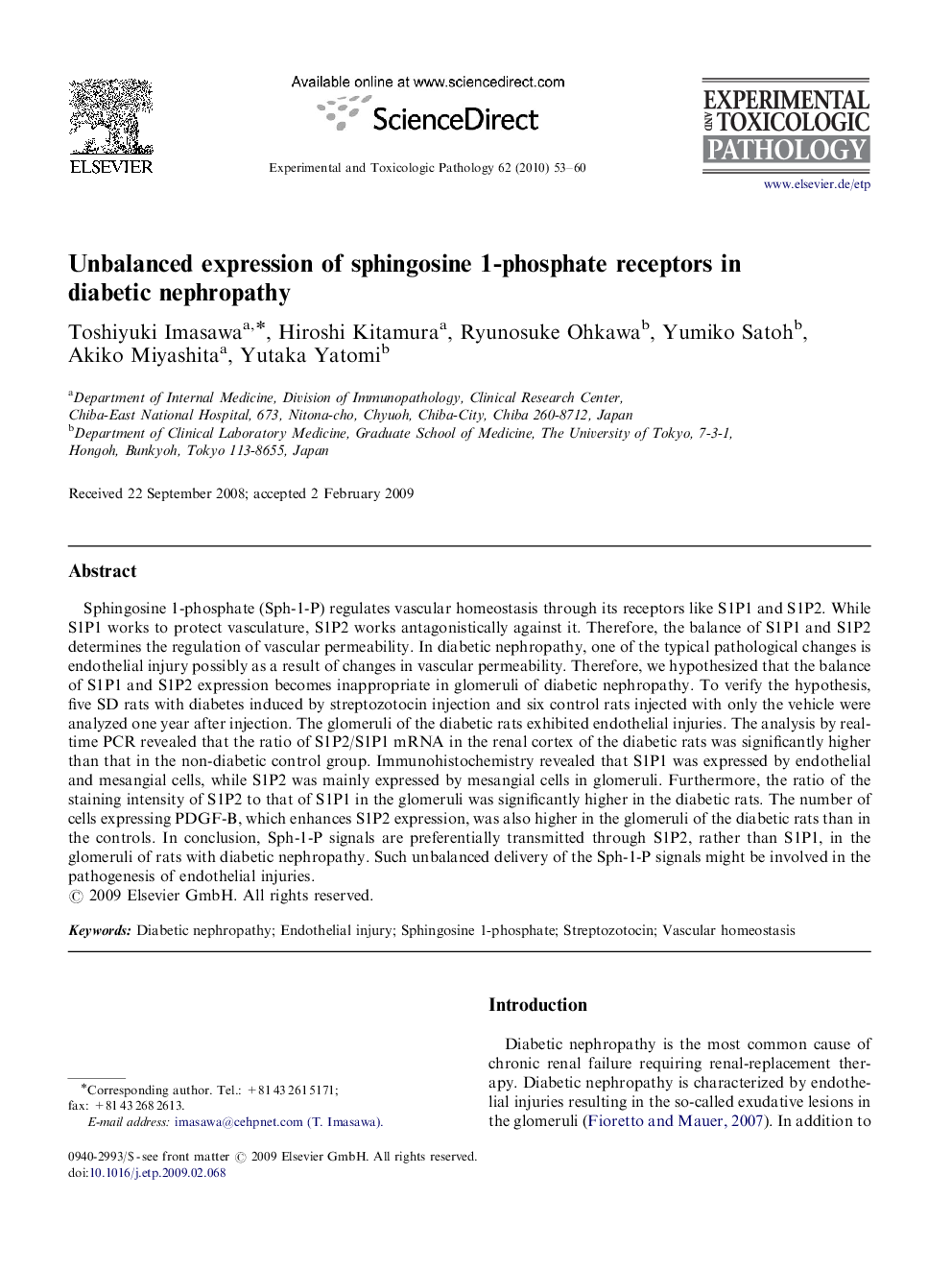| Article ID | Journal | Published Year | Pages | File Type |
|---|---|---|---|---|
| 2499638 | Experimental and Toxicologic Pathology | 2010 | 8 Pages |
Sphingosine 1-phosphate (Sph-1-P) regulates vascular homeostasis through its receptors like S1P1 and S1P2. While S1P1 works to protect vasculature, S1P2 works antagonistically against it. Therefore, the balance of S1P1 and S1P2 determines the regulation of vascular permeability. In diabetic nephropathy, one of the typical pathological changes is endothelial injury possibly as a result of changes in vascular permeability. Therefore, we hypothesized that the balance of S1P1 and S1P2 expression becomes inappropriate in glomeruli of diabetic nephropathy. To verify the hypothesis, five SD rats with diabetes induced by streptozotocin injection and six control rats injected with only the vehicle were analyzed one year after injection. The glomeruli of the diabetic rats exhibited endothelial injuries. The analysis by real-time PCR revealed that the ratio of S1P2/S1P1 mRNA in the renal cortex of the diabetic rats was significantly higher than that in the non-diabetic control group. Immunohistochemistry revealed that S1P1 was expressed by endothelial and mesangial cells, while S1P2 was mainly expressed by mesangial cells in glomeruli. Furthermore, the ratio of the staining intensity of S1P2 to that of S1P1 in the glomeruli was significantly higher in the diabetic rats. The number of cells expressing PDGF-B, which enhances S1P2 expression, was also higher in the glomeruli of the diabetic rats than in the controls. In conclusion, Sph-1-P signals are preferentially transmitted through S1P2, rather than S1P1, in the glomeruli of rats with diabetic nephropathy. Such unbalanced delivery of the Sph-1-P signals might be involved in the pathogenesis of endothelial injuries.
